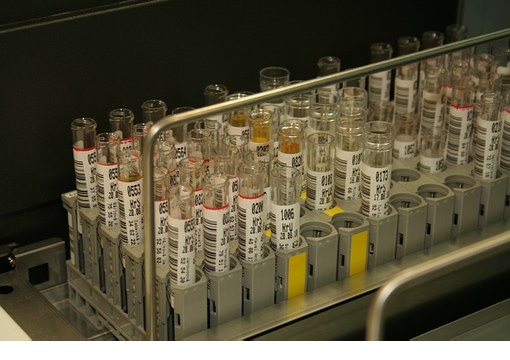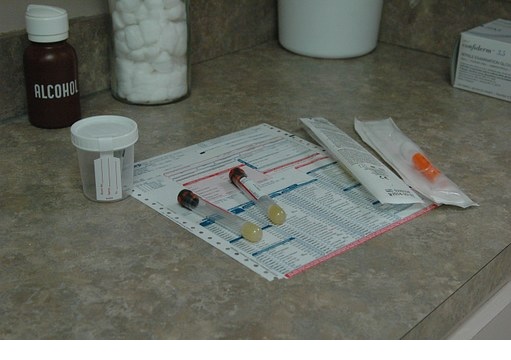Health News
Top Fake Urine for a Drug Test - Upass Synthetic Urine

Urine is the biological test most commonly used for testing, but other samples such as blood, hair, saliva, sweat can also be used. There are tips online like the one you can find at the Clear Drug Tests page which can help you pass drug tests.
Types of drugs tested
Amphetamines
They are chemically and pharmacologically related CNC stimulant substances with epinephrine and norepinephrine (catecholamines in the body). These substances are widespread especially as inhibitors of food appetite in slimming cures, respectively indicated to increase performance before the examination or in professional life. After ingestion, amphetamines are readily absorbed from the stomach and enter the bloodstream quickly. They are metabolized in the liver and eliminated by the kidney. Amphetamines can induce both physical and psychological dependence. Overdose causes anorexia, insomnia, psychomotor agitation, marked anxiety, hypertension, and arrhythmias.
Barbiturates
Barbiturates are a class of drugs derived from barbituric acid (malonylurea), are hypnotic sedatives that depress CNS activities. These medications are medically prescribed to reduce emotional tension and induce sleep. They are also used in some forms of epilepsy to reduce the frequency of seizures. They are mostly metabolized in the liver and excreted in the urine. Excessive administration of barbiturates leads to movement coordination disorders, perceptions, and thinking alterations, disinhibition euphoria. Overdosage can induce stupor, coma, and in extreme cases, death. The association of alcohol, opiates, and other CNS depressants can cause fatal reperfusion injury.
Benzodiazepines
They are a class of depressant CNS drugs, widely used in medical practice due to anxiolytic, sedative, myorelaxant and anticonvulsant effects. Overdosage occurs when given in combination with other classes of centrally acting drugs or alcohol. After ingestion, they are absorbed, metabolized and then excreted in the urine in varying proportions. See here.
Cocaine
Cocaine is an effective CNS stimulant as well as a local anesthetic. Its pharmacological effects are identical to those of amphetamines, although cocaine has a shorter duration of action. It absorbs quickly into circulation; its results are intense but short-lived. Unmetabolized cocaine has an affinity for fatty tissues and promptly penetrates the brain. The effects of cocaine can be noticed immediately after consumption and disappear within 20-30 minutes of use. Small doses cause euphoria and energy. Cocaine inhibits appetite and reduces the need for sleep. The psychological effects may be accompanied by tachycardia, mildness, fever, trembling and sweating. Overdosage can lead to seizures, but also hallucinations. Finally, the clinical picture degenerates with the loss of consciousness, respiratory depression and the collapse of blood circulation that will lead to death. Cocaine leads to an intense psychic addiction and a tendency to increase the dose in the absence of physical dependence or tolerance to the substance. Psychic withdrawal phenomena occurring in case of abstinence are often so powerful that they can lead to suicide attempts.
Marijuana
It contains tetra-hydro-cannabinol (THC) which is its main psychoactive component. In urine, cannabis metabolites can be detected within a few hours of exposure. Chronic use can induce cardiovascular and lung effects.

Morphine
It is a narcotic anesthetic used to relieve severe pain. Opioids are usually given intravenously or subcutaneously, but can also be smoked or taken. After entering the circulation, tend to focus on the lungs, spleen, kidneys, and liver. Lower concentrations are found in the musculature and the CNS. Morphine is mainly excreted in the urine. Opioids induce a state of intense physical dependence. The withdrawal symptoms may occur within a few hours of the last dose and may last for a period of 5-10 days.
Methadone
Methadone is a synthetic opioid, used as analgesic, antitussive or as a substitution medicine to prescribe for primary opioid dependence. Generally, methadone is well tolerated, but some patients may experience certain disorders, of which the most important are: excessive sweating, constipation, nausea, sleep disturbances, and gustatory sensitivity. Adverse effects occur after repeated administration and include marked sedation, respiratory depression and CNS, nausea, vomiting, bradycardia, hypotension, increased intracranial pressure, myositis, antidiuretic hormone release, and physical and psychological dependence. Read more about it here: https://www.webmd.com/mental-health/addiction/what-is-methadone
Interpretations
The positive result in initial testing means that the person tested has a substance in the body that falls into one of the drug classes and its level is above the set maximum. If, after the subsequent tests, the test is confirmed as positive (such as positive for marijuana), then it is certain that the person took the substance.
If the drugs for which the tests are performed are not present in the sample or have a value below the maximum set threshold, then the test result is usually reported as "not detected." The substance may have values below the threshold; it may have already been metabolized and removed from the body or the test method used does not detect the presence of a particular substance in the test sample.
Urine tests identify the use of amphetamines, cocaine, and opiates in the past 2-3 days. The consumption of marijuana and its metabolites (cannabinoids) is detectable for a few weeks.

























